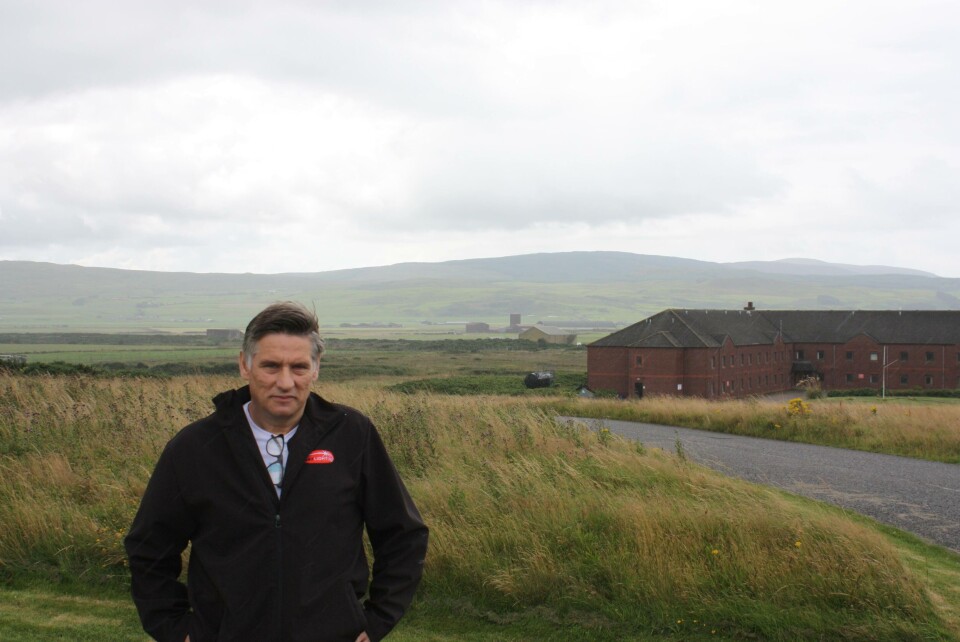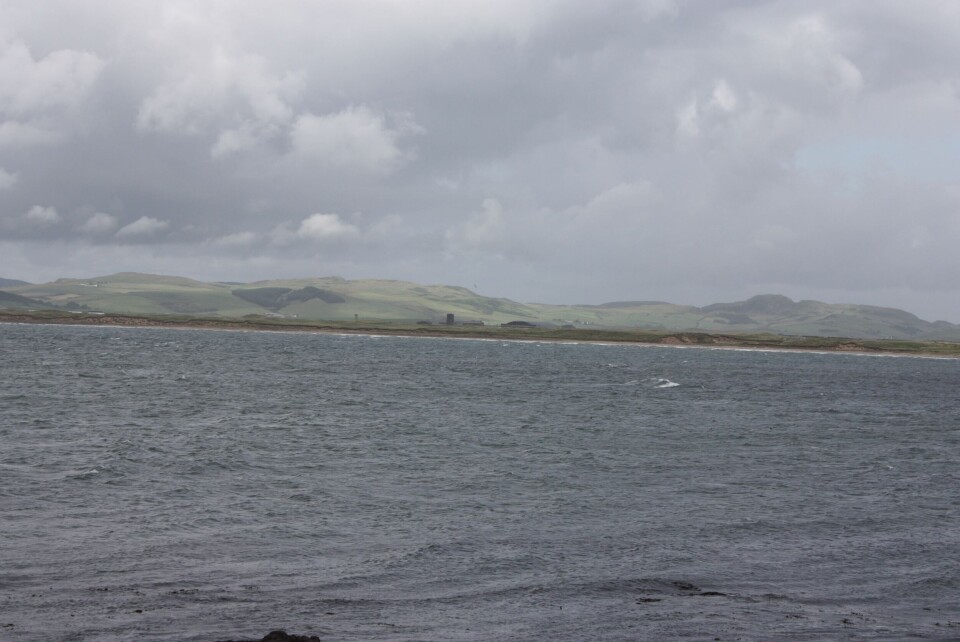
A quantum leap in Scottish salmon production
A newly stocked land-based fish farm has the potential to produce up to 40,000 tonnes of salmon a year, according to its chief operator.
Arve Gravdal, a Norwegian expert in RAS systems, has established the exciting venture at the site at the MACC – a former military aircraft base on the Kintyre peninsula – and has recently stocked his first 26,000 smolts into a revolutionary recirculation tank design.
As he explained to Fish Farming Expert this week, the first tank, which is located inside a former NATO aircraft hangar, holds a whopping 1500m3 of water and has the capacity to yield around 120 tonnes of salmon a year.

“We have the funding in place to construct and stock a further seven tanks of the same size within the hangar, which together would allow us to produce around 960 tonnes of salmon a year,” he says.
Producing such a volume of salmon from a land-based plant would itself be truly revolutionary, but for Arve this is only the tip of the iceberg.
“Once phase one of the operation is complete, we will move forward with our plans to construct up to forty 6000m3 tanks outside the building, spread across the 50 or so acres of the site,” he reveals.
When this is complete, it should mean that he is able to produce up to 40,000 tonnes of salmon annually, a considerable quantity given that the entire Scottish industry currently produces around 160,000 tonnes a year.
Building on past success
Although such a radical plan has been questioned by conventional salmon farmers both in Arve’s homeland and in the UK, he is adamant that such a goal is not only achievable, but also possible within a few years – a claim which stems from his tireless devotion to developing pioneering RAS systems over the last two decades.
As he explains: “Our second generation system, which we developed in 2008 and worked flawlessly for 4 years in Norway, using SuperSmolt, showed that it was dramatically more economical to grow fish in tanks than in the sea, with even better margins than the current top sea-based producer. And the third generation, which we’re now building, should be a further improvement on this, particularly as marine production costs are continuing to skyrocket.”
Keeping it simple
According to Arve, part of the beauty of Niri’s latest system is its simplicity.
“The tanks, which are made by Reliant Installations, are constructed by bolting together pre-fabricated sheets of glass-fused-to-steel and can be assembled very rapidly,” he points out.
Moreover, the design of the RAS system is inspired by an initiative he was involved in in Egypt.
“I worked in a tilapia project in Africa in which the majority of our 400 workers had no formal education and I wanted to come up with pared down design that was easy to operate,” he explains.
Arve is, understandably, keen to keep the exact details of his design to himself, but the two main advantages are both that it’s inexpensive to construct and requires comparatively little electricity to run.
“Energy consumption – one of the greatest costs of land-based units – is far lower than in the sort of RAS systems that the conventional farming firms are using to grow smolts,” he points out.
Indeed, despite their huge size, each 1500 m3 tank only needs a 4kw water pump, plus an air pump, to keep it going.
And the fish should be very low maintenance too.

“There’s no need to touch the fish for the entire 6-9 months they’re in the tank,” enthuses Arve, “we don’t need to vaccinate, we don’t need to grade.”
Arve’s first batch of 26,000 smolts were sourced from Landcatch/Hendrix’s Ormsary facility, which is just up the road, and he impressed by the performance of the fish to date.
“We’re very happy with Landcatch,” he says, “they’ve been very helpful and the quality of the fish is excellent.”
Export opportunities
Ultimately, says Arve, he aims to use the Machrihanish site as a stepping-stone for setting up even larger land-based farms across the world.
“Our blueprint for industrial scale systems means that a Niri farm could easily hit 100,000 tonnes,” he reflects.






















































